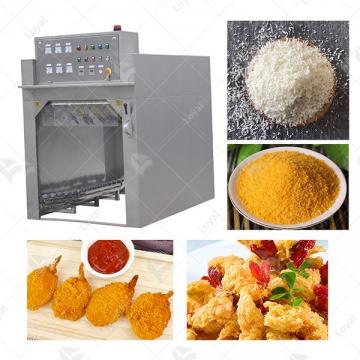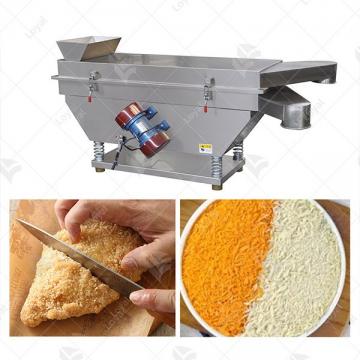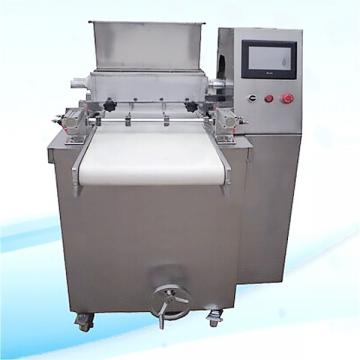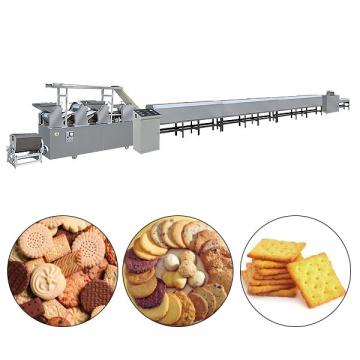
- Shandong Loyal Industrial Co.,Ltd.
- Macaroni Production Machine Instant Noodle Machine Biscuit Making Machine
Home> Company News> How To Choose The Best machine kurkure: 2024 Buyer’s Guide

How To Choose The Best machine kurkure: 2024 Buyer’s Guide
2025-01-02 17:01:57The Evolution of Machine Kurkure
The snack industry has witnessed a surge in innovation over the years, with consumers demanding more variety, convenience, and quality in their snacking options. Among these innovations, the rise of machine kurkure stands out as a significant game-changer. Machine kurkure, as the term suggests, refers to the advanced machinery employed in the production of kurkure snacks, a beloved crunchy treat enjoyed globally.
1.Early Days and Manual Production
In the nascent stages of kurkure production, the process was largely manual and labor-intensive. Manufacturers relied on human hands to shape, cook, and package the snacks, which limited production capacity and increased labor costs. The quality and consistency of the snacks were also heavily dependent on the skill and experience of the workers involved.
2.The Introduction of Mechanized Production
As technology advanced, the snack industry began to adopt mechanized production methods to address the limitations of manual labor. Machine kurkure emerged as a pivotal innovation, automating the production process and improving efficiency. These early machines were designed to shape and cook the snacks at a consistent rate, ensuring uniformity in size, texture, and flavor.
3.The Evolution to Advanced Machinery
Over time, the machinery used in kurkure production has evolved from basic mechanization to highly sophisticated systems. Modern machine kurkure now incorporates advanced features such as automated ingredient handling, precise temperature control, and real-time monitoring. These advancements have significantly enhanced the quality and consistency of the snacks, while also reducing waste and improving overall production efficiency.
4.The Role of Technology in Driving Innovation
The integration of technology has been a driving force behind the evolution of machine kurkure. From automated conveyor systems to intelligent controls, technology has enabled manufacturers to streamline the production process and optimize output. Moreover, the adoption of data analytics and machine learning algorithms has allowed for predictive maintenance and quality control, further enhancing the reliability and performance of machine kurkure.
5.The Impact on the Snack Industry
The rise of machine kurkure has had a profound impact on the snack industry. It has not only increased production capacity and reduced costs but has also enabled manufacturers to innovate and cater to diverse consumer preferences. With machine kurkure, snack producers can now offer a wider range of flavors, textures, and packaging options, meeting the evolving demands of the market.

Key Features and Benefits of Machine Kurkure in Snack Production
Machine kurkure has revolutionized the snack production industry, bringing efficiency, consistency, and innovation to the table. Here are some of the key features and benefits of machine kurkure in snack production:
- Key Features
|
Automation and Mechanization |
Machine kurkure incorporates automated systems that handle the entire production process from start to finish.This includes ingredient mixing, shaping, cooking, cooling, and packaging, all done with minimal human intervention. |
|
Precision and Consistency |
Advanced machinery ensures that each batch of kurkure snacks is produced with precision, resulting in consistent size, shape, texture, and flavor.The use of sensors and automated controls maintains optimal production parameters, ensuring high-quality output. |
|
Scalability and Flexibility |
Machine kurkure can be scaled up or down to meet varying production demands.Manufacturers can easily adjust the machinery to produce different flavors, sizes, and shapes of snacks, catering to diverse consumer preferences. |
|
Energy Efficiency and Cost-Effectiveness |
Modern machine kurkure is designed to be energy-efficient, reducing electricity and fuel consumption.Automation also leads to reduced labor costs, as fewer workers are needed to operate the machinery. |
|
Data Integration and Monitoring |
Many machine kurkure systems are equipped with data integration capabilities, allowing manufacturers to monitor production in real-time.This data can be used for predictive maintenance, quality control, and optimization of production processes. |
- Benefits
|
Increased Production Capacity |
Automation and mechanization significantly increase production capacity, allowing manufacturers to produce larger quantities of snacks in a shorter period. |
|
Improved Quality and Consistency |
Precision and consistency in production lead to improved quality of snacks, ensuring that each batch meets high standards.This consistency is crucial for maintaining customer satisfaction and loyalty. |
|
Cost Savings |
Energy efficiency and reduced labor costs contribute to overall cost savings for snack manufacturers.These savings can be passed on to consumers, making kurkure snacks more affordable. |
|
Innovation and Customization |
The scalability and flexibility of machine kurkure enable manufacturers to innovate and customize snacks to meet evolving market trends and consumer preferences.This adaptability is crucial in a highly competitive snack industry. |
|
Environmental Sustainability |
Advanced machinery often incorporates eco-friendly features, such as energy-efficient components and waste reduction technologies.This contributes to the environmental sustainability of snack production. |

The Impact of Machine Kurkure on Snack Production
The impact of machine Kurkure on snack production is significant, particularly in terms of efficiency, product diversity, and quality consistency. Here's a detailed look at how machine Kurkure has influenced snack production:
1. Enhanced Production Efficiency
Automation: Machine Kurkure typically involves automated production lines that can handle mixing, cooking, extruding, shaping, baking, and frying processes with minimal human intervention. This automation significantly increases production speed and reduces labor costs.
Capacity: The machines are designed to handle large volumes of raw materials, allowing for the production of snacks in bulk. This is especially beneficial for manufacturers who need to meet high demand or produce for export markets.
2. Increased Product Diversity
Customizable Shapes and Sizes: Machine Kurkure allows for the easy change of molds and shaping machines, enabling manufacturers to produce a wide variety of snack shapes and sizes. This includes sticks, square sheet rib chips, diamond chips, wavy chips, and more.
Material Flexibility: The machines can use a range of raw materials, such as rice powder, corn powder, wheat flour, and their mixtures. This flexibility allows manufacturers to create unique snack flavors and textures that cater to different consumer preferences.
3. Consistency in Quality
Precision Control: Automated machines provide precise control over the production process, ensuring consistent quality in terms of taste, texture, and appearance.
Hygiene and Safety: Machine Kurkure production lines are often equipped with advanced hygiene and safety features, such as stainless steel construction and closed-loop systems, to minimize contamination and ensure product safety.
4. Economic Benefits
Cost-Effective: Although the initial investment in machine Kurkure may be high, the long-term benefits in terms of increased production efficiency, reduced labor costs, and consistent quality make it a cost-effective solution.
Market Expansion: The ability to produce a wide range of snacks with consistent quality allows manufacturers to expand their market reach and target diverse consumer groups.
5. Environmental Considerations
Energy Efficiency: Many modern machine Kurkure production lines are designed to be energy-efficient, reducing electricity consumption and waste production.
Sustainable Practices: Manufacturers can further enhance their environmental footprint by using sustainable raw materials and implementing recycling programs for waste materials.

Market Trends and Consumer Preferences
Market Trends and Consumer Preferences are constantly evolving, influenced by various economic, social, and technological factors. Here's an overview of some current market trends and consumer preferences:
Market Trends
|
Digitalization and Personalization |
The market is increasingly shifting towards digital and personalized products and services.Consumers prefer smart home devices, wearable technology, and other digital gadgets that can be customized to their needs. |
|
Sustainability and Eco-friendliness |
There is a growing emphasis on sustainability and eco-friendliness among consumers.They are more likely to choose brands and products that are environmentally friendly and use renewable energy. |
|
Health and Fitness |
The health and fitness industry is booming, with consumers showing a heightened interest in healthy eating and exercise.Products such as low-sugar, low-salt, and additive-free foods, as well as fitness equipment and apparel, are in high demand. |
|
Experience and Socialization |
Consumers are increasingly valuing experiences and social interactions.They prefer products and services that can be shared with friends and provide a comfortable, enjoyable experience, such as themed restaurants and unique entertainment options. |
|
Instant Retail and Diversified Consumption Scenarios |
The instant retail market is experiencing rapid growth, with consumers demanding more diversified consumption scenarios.From emergency needs to everyday purchases, instant retail platforms are becoming an integral part of consumers' lives. |
Consumer Preferences
|
Price Sensitivity and Quality Focus |
Consumers are becoming more price-sensitive and quality-conscious.They seek high-quality products at reasonable prices, preferring value for money over luxury or excessive spending. |
|
Health-Conscious Choices |
Health is a top priority for consumers, who are increasingly opting for healthy and nutritious food options.This includes a preference for organic, non-GMO, and additive-free foods. |
|
Personalization and Customization |
Consumers want products and services that cater to their individual needs and preferences.Personalization is not just limited to products but also extends to services, such as tailored travel packages or customized fitness plans. |
|
Environmental Awareness |
Consumers are increasingly aware of the environmental impact of their purchases.They prefer products that are eco-friendly, sustainably sourced, and have a lower carbon footprint. |
|
Digital and Social Influence |
Digital platforms and social media play a significant role in shaping consumer preferences.Consumers are influenced by online reviews, social media trends, and recommendations from influencers when making purchasing decisions. |

Challenges and Opportunities in Machine Kurkure Adoption
Challenges
Cost and Investment:
The initial cost of acquiring and installing the Kurkure machine may be high.
Additional investments may be required for training personnel, maintaining the machine, and ensuring compatibility with existing systems.
Technical Integration:
Integrating the Kurkure machine with existing production processes and systems may pose technical challenges.
Ensuring seamless operation and data flow between the machine and other systems may require specialized knowledge and expertise.
Regulatory Compliance:
Adhering to industry standards, safety regulations, and environmental laws may be crucial for the adoption of the Kurkure machine.
Obtaining necessary certifications and approvals may involve time-consuming and costly processes.
Operational Efficiency:
Ensuring the Kurkure machine operates efficiently and consistently may require ongoing maintenance and monitoring.
Downtime due to machine failures or maintenance can disrupt production schedules and lead to losses.
Market Acceptance:
If the Kurkure machine produces a new or innovative product, market acceptance may be uncertain.
Consumer preferences and market trends may affect the demand for the product produced by the machine.
Opportunities
Increased Productivity:
The Kurkure machine may offer significant improvements in production speed and efficiency.
This can lead to increased output and reduced labor costs, enhancing overall productivity.
Product Innovation:
The adoption of the Kurkure machine may enable the development of new or improved products.
This can create new market opportunities and differentiate the business from competitors.
Cost Savings:
Over time, the Kurkure machine may lead to cost savings through reduced waste, improved material utilization, and energy efficiency.
These savings can improve the bottom line and increase profitability.
Scalability:
The Kurkure machine may be scalable, allowing the business to expand production capacity as needed.
This can support growth and expansion plans, enabling the business to capture a larger market share.
Competitive Advantage:
By adopting the Kurkure machine, the business may gain a competitive advantage over competitors who have not yet adopted similar technology.
This can lead to increased market share, higher prices, and improved brand reputation.
In conclusion, the adoption of the Kurkure machine (or any similar technology) presents both challenges and opportunities. Careful planning, execution, and ongoing monitoring are crucial to maximize the benefits and minimize the risks associated with its adoption.

Reference
The following are five authoritative foreign literature websites in the field of Industrial food machinery:
1. Food Engineering Magazine
Website: https://www.foodengineeringmag.com/
2.Food Processing Magazine
Website: https://www.foodprocessing.com/
3.Journal of Food Engineering
Website:https://www.journals.elsevier.com/journal-of-food-engineering
4. Food Manufacturing Magazine
Website:https://www.foodmanufacturing.com/
5. International Journal of Food Science & Technology
Website:https://onlinelibrary.wiley.com
 Commercial Japanese Panko Bread Crumb Grinder Machine
Commercial Japanese Panko Bread Crumb Grinder Machine Japanese Bread Crumbs Processing Line
Japanese Bread Crumbs Processing Line Automatic Cookies Making Machines
Automatic Cookies Making Machines Fully Automatic Biscuit Making Machines
Fully Automatic Biscuit Making Machines